Azure Bastion Key Vault integration behind the scene
Introduction
Azure Bastion and Azure Key Vault, two essential security components of Microsoft Azure, work seamlessly together to provide enhanced security and remote access capabilities to your Virtual Machines. But, you may have already faced issues accessing your Azure Key Vault secrets from the Azure Bastion interface when they are both in the network but not your browser. This article aims to explain why.
Setup
The following architecture is composed of an Azure Virtual Network vnet-demo with two subnets AzureBastionSubnet and VMSubnet respectively for the Azure Bastion bastion, a Virtual Machine vm-demo and an Azure Key Vault kvbastionintegration. vnet-demo is setup with default settings and default Network Security Group that enable communications between each component within the network.
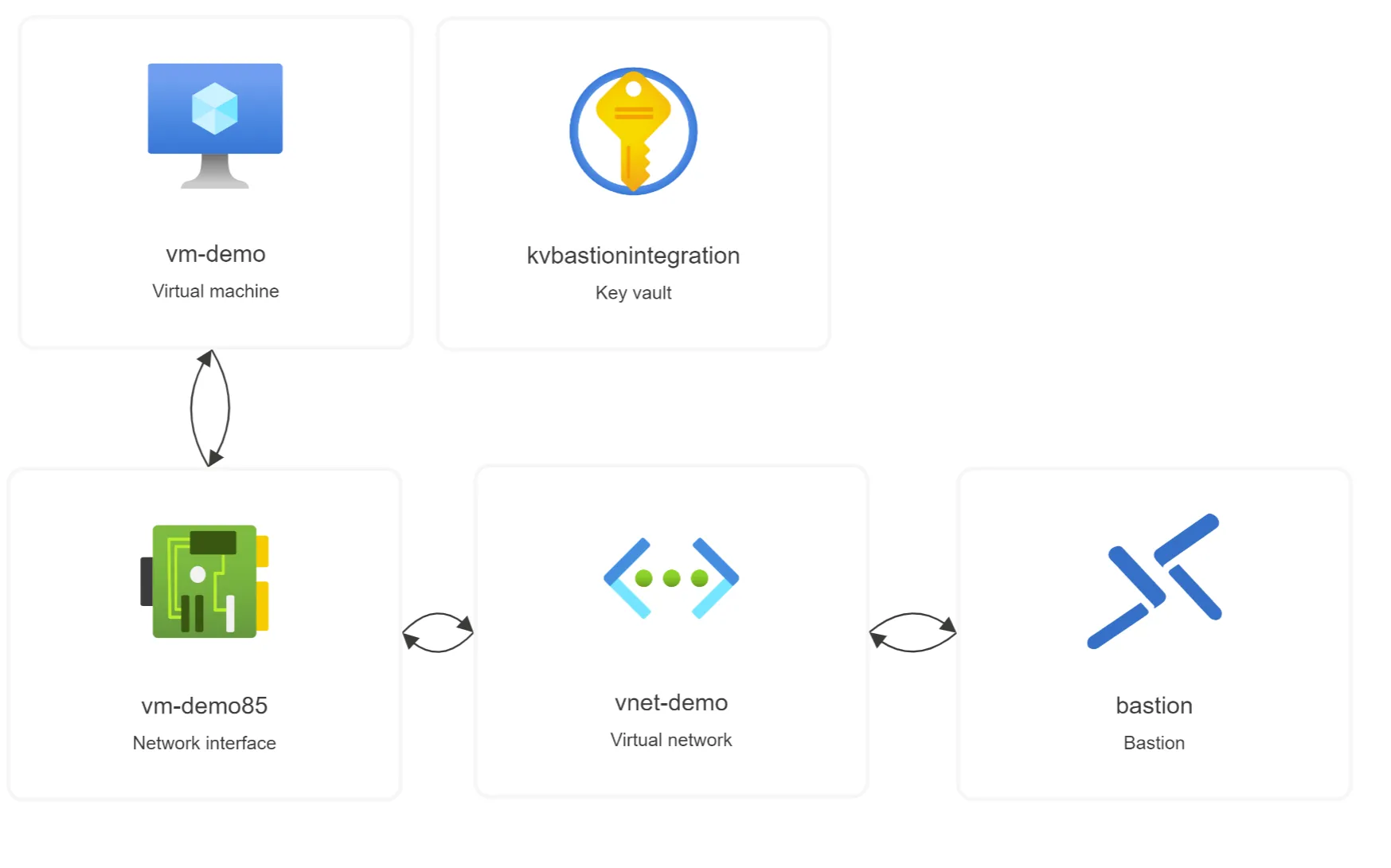
kvbastionintegration is open on the Internet and contains a secret named vm-password, which is the virtual machine password for the SSH-based connection on vm-demo.
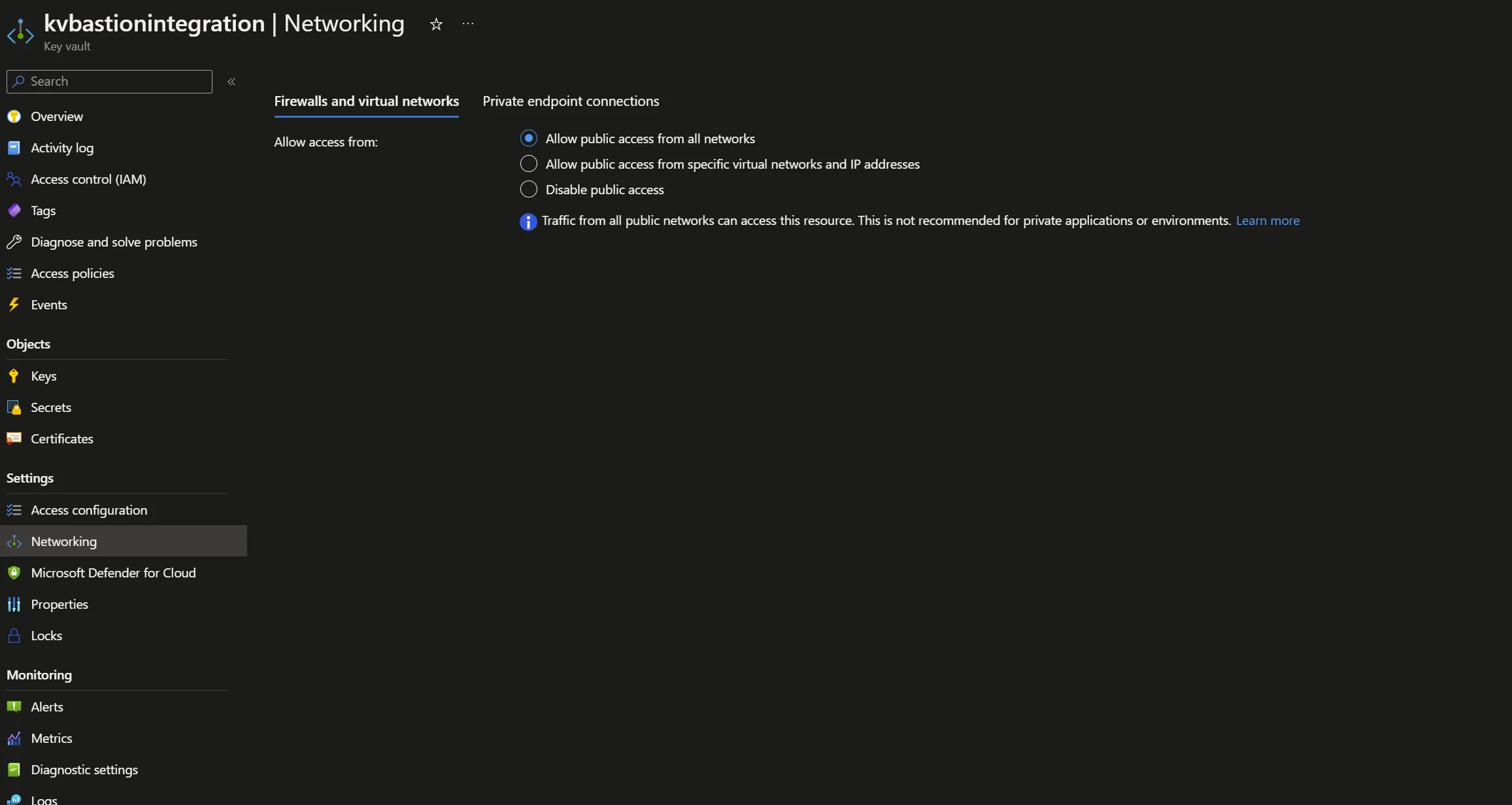
Connection
In that basic configuration, the connection to vm-demo via bastion using vm-password in kvbastionintegration is possible.
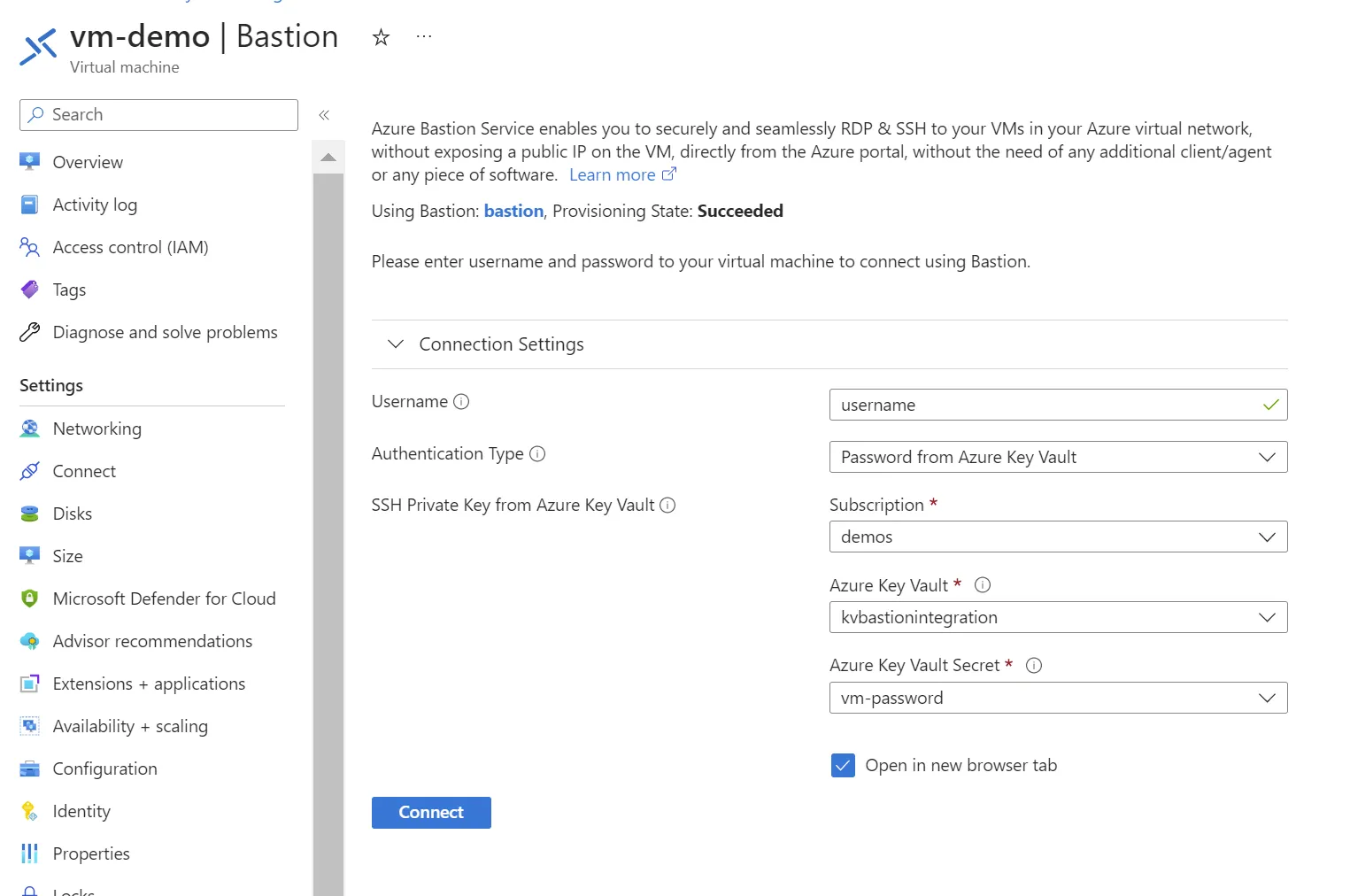
Applying network restrictions
For security reasons, we want to limit kvbastionintegration accesses from AzureBastionSubnet, VMSubnet and trusted Microsoft services.
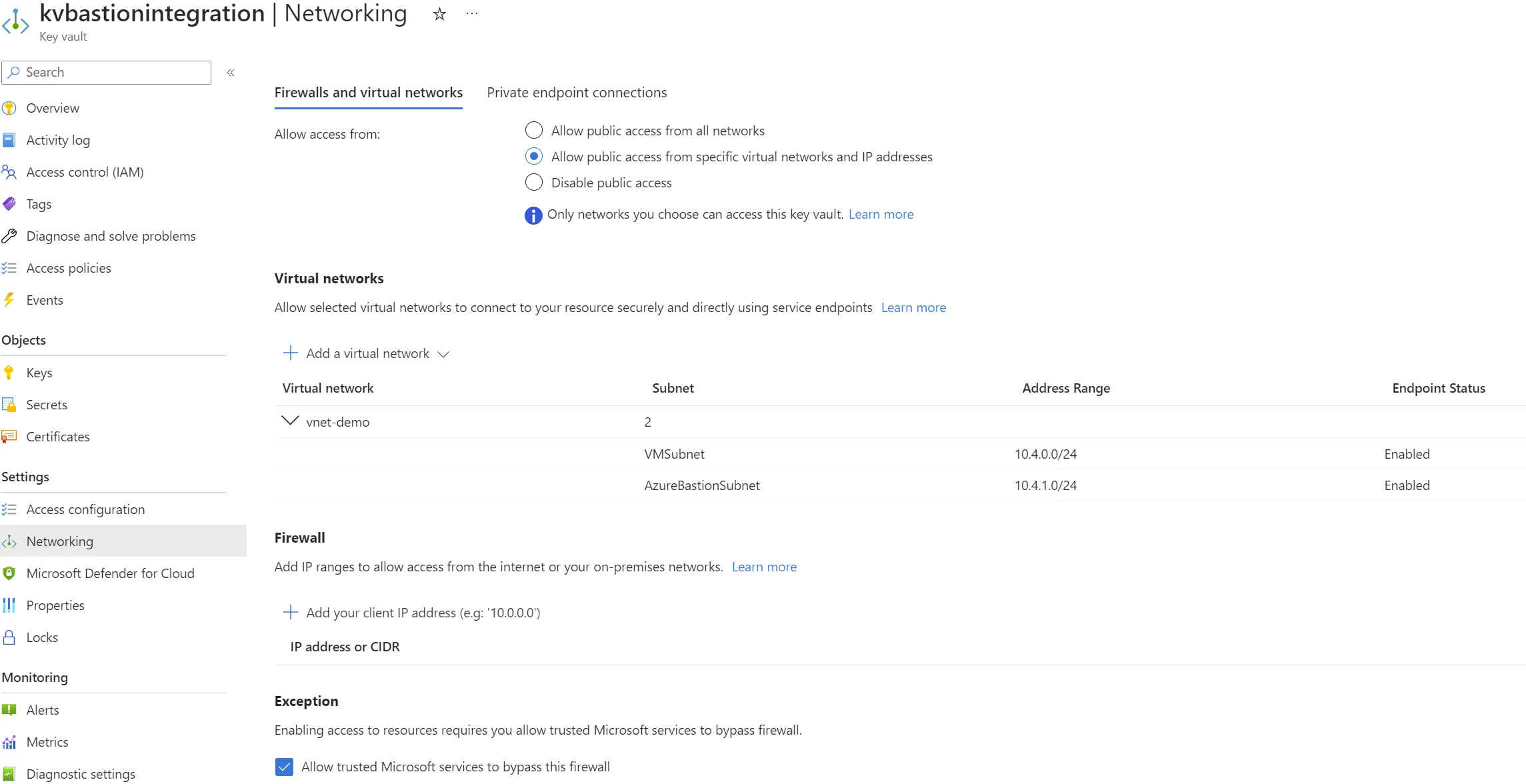
Here’s what the updated architecture looks like.
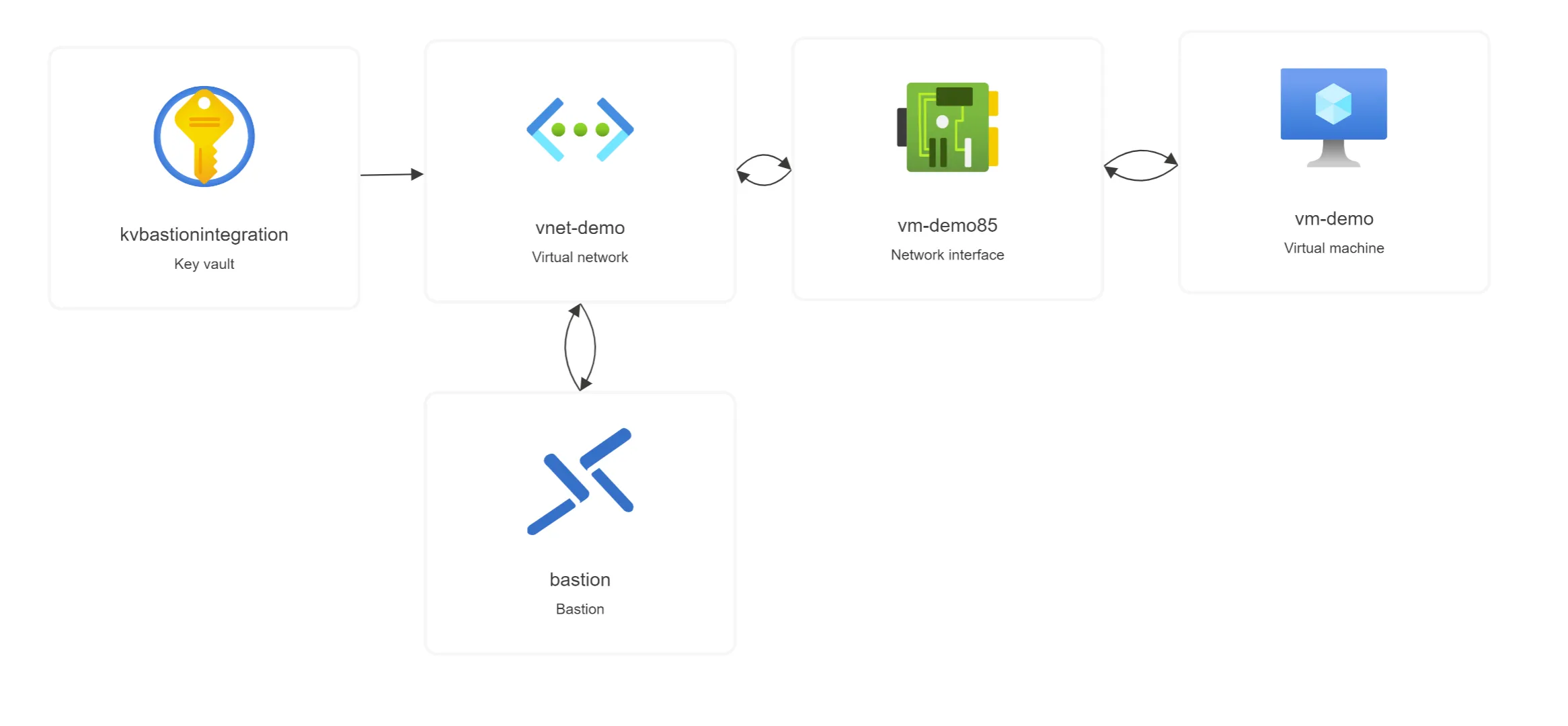
Unfortunately, this setup leads to denied access to kvbastionintegration if we try to access its content from the bastion interface.
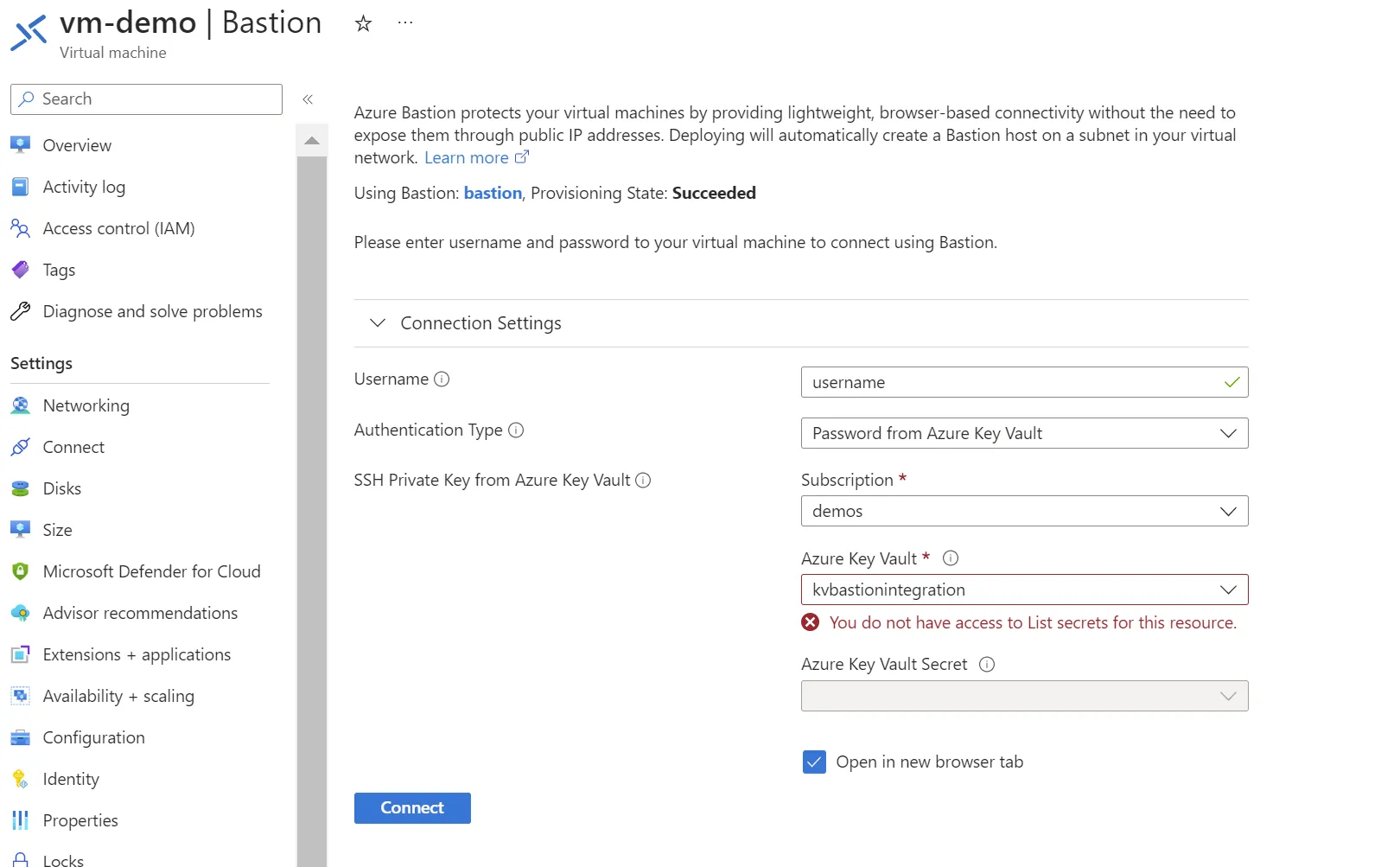
Why ?
This can be considered inappropriate at the beginning because the subnet of bastion is allowed to communicate with kvbastionintegration. The reason is trivial: the secret is not obtained by the backend of the bastion, but by your browser. In other words, the integration between Azure Bastion and Azure Key Vault is nothing but a piece of Javascript being executed in your navigator that calls your key vault to get the secret and pass it on to the Azure Bastion. And that explains why the only network that should be allowed on your Azure Key Vault is the one where your browser is in.
Any proof ?
Let’s open your developer console in your navigator and do a network analysis.

Now, if your IP is allowed to kvbastionintegration, you can see the list operation first.

Then when retrieving the selected secret.

Zero Trust
Azure Bastion delegates responsibility for retrieving the secret to the user’s browser for security reasons. Only Azure Key Vault can explicitly verify a user’s legitimacy, which involves its network. Allowing Azure Bastion to access an Azure Key Vault because network communication is open between them is a presumption of user legitimacy, which is contrary to the Zero Trust model.
Conclusion
Although it may be disturbing at first glance, this implementation, which works entirely within the user’s browser, is yet another demonstration of the Zero Trust model applied by Microsoft to improve the overall security of our platform.